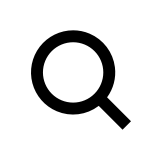Leon Van Essche

The experimental poet and visual artist Leon Van Essche took painting lessons at the Academy of Antwerp in the years 1935-36 and later also in 1956-57 but was always extremely interested in the wealth and visual possibilities of language and imagery. Inspired by the Fluxus movement he became one of the Belgian pioneers of concrete and visual poetry. In 1962 he co-founded the alternative and neo-experimental literary magazine Labris, which contained jazz-inspired poetry and was especially known for a strongly hermetic and pure conception of poetry.
In 1937 Leon van Essche was recruited by the Compagnie Maritime Belge (CMB), which enabled him to sail around the world. He visited New York, Alexandria, Tel Aviv, Algiers, Gibraltar and South Africa, among others, until persistent diabetes complications put a premature end to his shipping career in 1949. He ended up in dire straits and tried to survive on disability. In the meantime he attempted with difficulty to continue his literary explorations. The grimness of life is clearly expressed in his graphic writing, which is characterised by enigmatic and almost unreadable visual poems that take the form of abstract-geometric and psychedelic compositions with line and dot drawings. At the same time he was also developing a plastic oeuvre that drew heavily on esoteric and occult traditions, as a result of which his visual oeuvre remained largely shrouded in riddles and mystery.
When his poem collection XIII Kankerremedies (Cancer Remedies) was published in 1960, poet-artist and publisher Paul de Vree responded positively: “Van Essche practices pure poetry and adapts the language material like puzzles and crosswords. For my part, I find Van Essche's poetics partly sanitising compared to both modern and traditional word flow."
Until his death in 1993 Leon Van Essche continued to paint, write and publish in various literary magazines but nevertheless remained largely under the radar as a language artist. To avoid the possible loss of his disability benefits he decided in 1963 to no longer exhibit or sell his work. He focused on his work on paper (drawings and works with typewriter) which are published in the magazine Labris, his only means of communication. In 1981 an exhibition was dedicated to his work in the Internationaal Cultureel Centrum in Antwerp. The artist selected some of his most important works and pasted the originals on cardboard plates to provide insight into his mysterious visual experiments and his enigmatic practice.
HW
